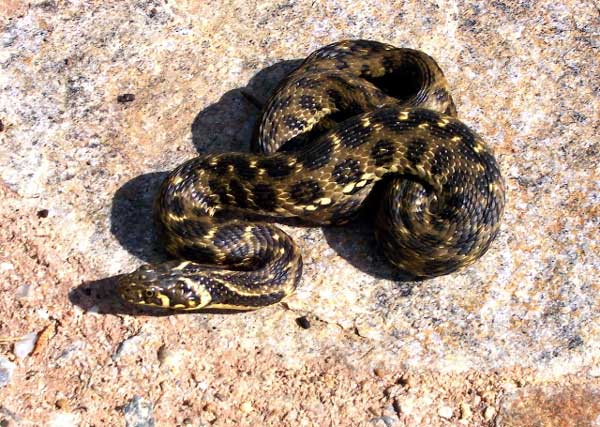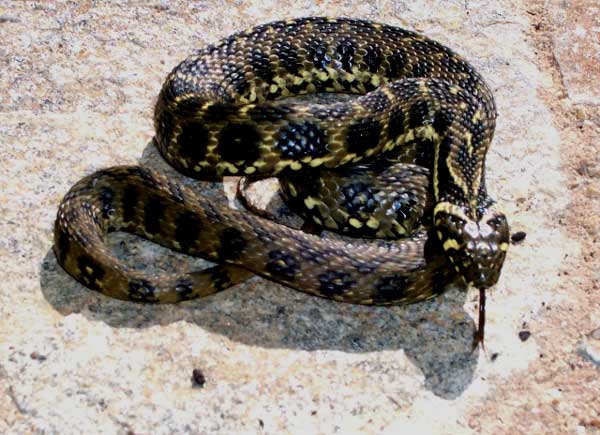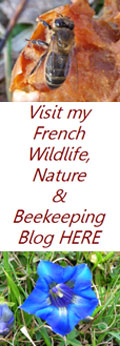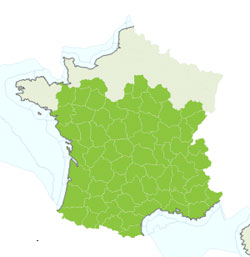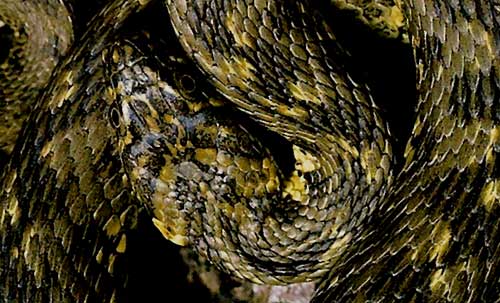

Viperine snake
Natrix maura
Couleuvre vipérine
(Syn. Française Vipère d'eau)
The Viperine snake, (Couleuvre vipérine), is the smallest of the couleuvres to be found in France and they rarely grow larger than 60 or 70 cm’s although females may grow to 1 metre. It is frequently mistaken to be one of the different vipers to be found in France, hence its name from the French "Vipére". Its head is clearly distinct from its body, wider with flat top and sides, rather pointed nose, eyes with round pupils! At the back of its head are two lines, which can be clearly seen, in the form of a "V" the open part of the "V" at the rear although this may vary a little. Its colouring is extremely variable, olive greens, greenish brown, yellowish brown, greys, yellowish orange and reddish browns. On its back are two rows of dark lines, angled backwards, which are often joined together to give a zigzag pattern. Some may present with a more spotted appearance.

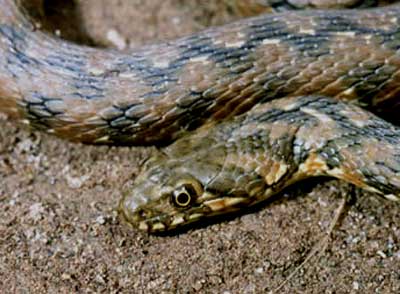
Photos: Viperine snake, France
Its preferred habitat is rapidly flowing rivers and streams, in France particularly the Tarn and the Jonte in the Cévennes, but it will also be found in lakes, slow rivers, ponds and in other waters that have sufficient aquatic life to support their diet that is made up of frogs, newts, fish, their eggs and other aquatic life. They can consume vast quantities, sometimes eating fish more than a quarter of their own size.
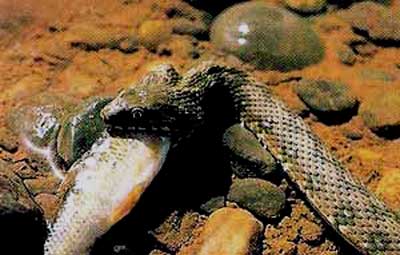
Photo above: Viperine snake eating a fish, France.
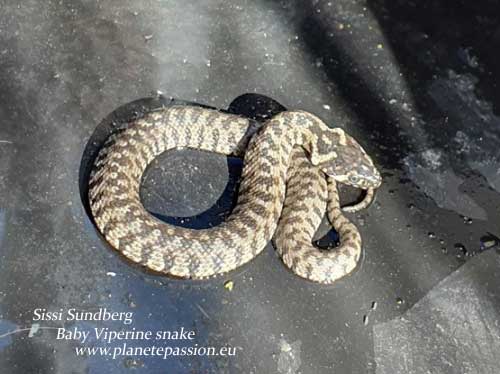
Photo above: Pale hatchling Viperine snake about 15cm. (Sissi Sundberg)
It is diurnal and an excellent swimmer and diver, staying underwater for a considerable time and likes to spend its time ( when not eating ) sunning itself by the waterside. In case of danger it slips away rapidly and silently, but if threatened it adopts a very similar intimidating pose to a Vipére hissing loudly and jerking its head in the direction of the threat and will even strike, but with its mouth closed. It will also emit an unpleasant scent from its anal glands.
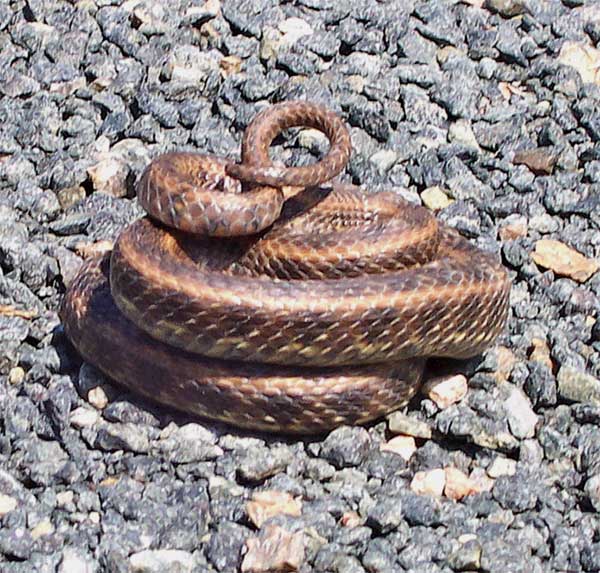
Its period of hibernation is from October until March/April either alone or in the company of other snakes, in a hole or beneath a pile of rocks. It is also incredibly resistant to cold surviving temperatures of minus 15 C. Coupling takes place in march/April, followed by the laying of between 5 and 15 (sometimes 20) eggs in July in moist soil or an abandoned hole in the ground. After 4 to 6 weeks the young hatch out.
Its range is most of France except the very North & North East.
NOT VENOMOUS
Population: In decline
